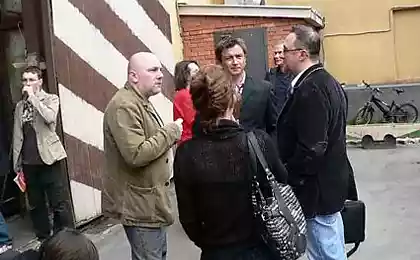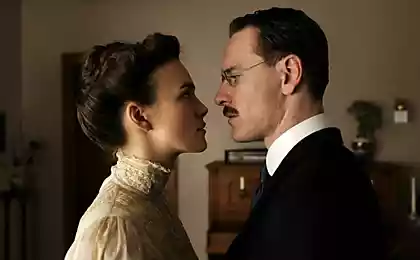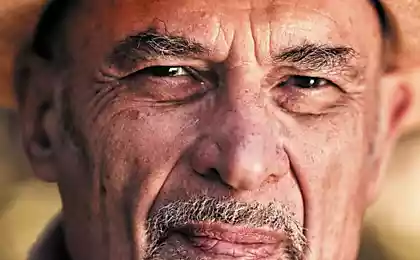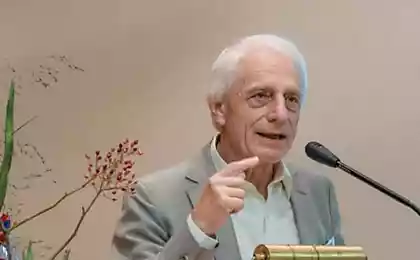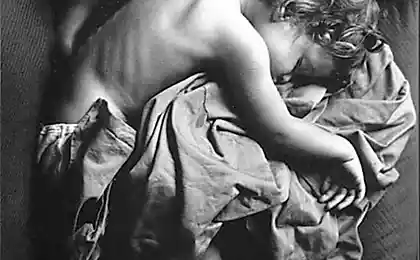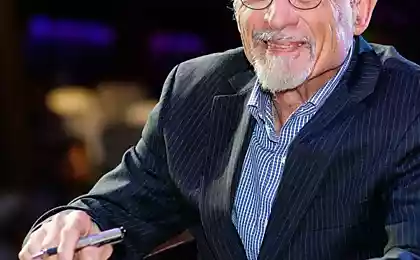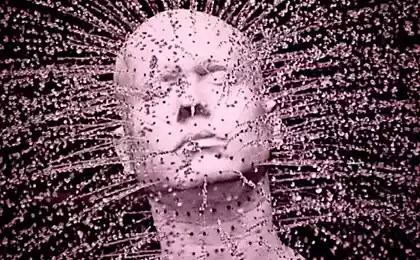511
Irvin Yalom: Heal a relationship of trust
Irvin Yalom is Professor of psychiatry at Stanford University, one of the founders of the school of existential therapy.
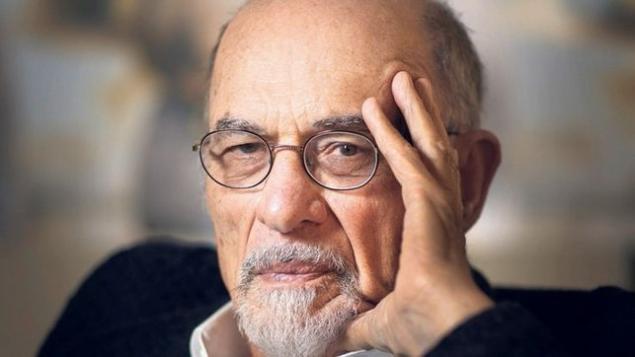
Question party video conference with the Professor:"do You have any know-how, what works with all the customers?"
"Yes there is! And the relationship therapist-client. Heals nothing like a relationship. I wrote about this in the book "Asistencialista psychotherapy." Here are excerpts from it:
Remember the two maxims of psychotherapy that I learned in the very beginning of his training.
The first of these "the Aim of psychotherapy is to bring the patient to the point where he can make a free choice".
The second "heal the relationship" is the most important lesson which the therapist must learn. In psychotherapy there is no more self-evident truth; every physician in clinical practice again and again make sure that patientally itself the meeting, regardless of the theoretical orientation of the therapist.
If there is anything proven psychotherapeutic study is the fact that a positive relationship between patient and therapist is positively associated with the outcome of therapy. The effective therapist responds to his patients in a sincere manner; it establishes a relationship that a patient perceives as safe and accepting; he shows devoid of plaque of possessiveness, warmth and a high degree of empathy; finally, he is able to "be with" patient and a "grasp the meaning" of the patient.
I have already compared the psychotherapy process, which is observed on culinary courses: apparently, critical differences, as in the Armenian dishes of eggplant and psychotherapy, due to "throw", supplements "off the record". These supplements most often belong to the sphere of relations therapist-patient. Effective psychotherapy is that the therapist has frequent contact with the patient is human and deeply personal way.Often this contact is crucial in therapy, but it does not fit in the official ideological doctrine is not described in the psychiatric literature (usually out of shame or fear of censorship), he doesn't teach students (and because he is not enrolled in the formal theory, because such training could contribute to the "excesses").
A beautiful illustration of the importance of authentic encounters the therapist and the patient we find in the book called "Decisive episodes in psychotherapy" (1959) described the number of episodes considered by physicians as turning points in therapy. In the great majority of these decisive episodes of the therapist out of their professional role and contact with the patient deeply humane way.Here are some examples:
1. At this point, That [the patient] looked me in the eye and very clearly and slowly said, "If you leave me I will not have hope." At that moment I was overwhelmed by the complex and strong emotions, consisting of sadness, hatred, pity, and feelings of incompetence. This phrase Tom became my "crucial episode". At that moment I was closer to him than to anyone else.
2. The therapist took the patient for an acute condition in the afternoon on Saturday, andalthough the therapist was hungry and tired, he continued the session for a few hours.
3. The therapist took the patient during course of treatment developed symptoms, raised suspicion for cancer. While she was waiting for the results of laboratory tests (which were negative), he was hugging her like a child; she was crying and was in a transient psychotic state, caused by fear.
4. A male therapist worked with the patient, a young woman who developed such a powerful positive eroticized transference to him that therapeutic work would have been impossible if he hadn't revealed to her some part of his personal life, allowing the patient to separate in your perception of the therapist's realistic moments of distortion.

5. Over several sessions, the patient insulted the therapist, attacking him personally and questioning his professional competence. The therapist finally exploded: "I started pounding the table with his fist and shouted: "Damn, look, why don't you just stop the verbal diarrhea, no longer attacking me, and not go finally to the point – try to understand yourself. What are the disadvantages I was, and I have a lot, they have nothing to do with your problems. I'm human, today was a bad day...“
6. The patient was left in an abandoned house on the cliff, where it could be reached only by a rickety wooden bridge. In this extreme situation, she called her therapist, who drove up to the house, was on the bridge, reassured her and took him home.
Other key episodes like this: the essence of each is the meeting of two people and departure from artificial or ideologically prescribed "treatment" with a patient.
P. S. And remember, just changing your mind — together we change the world! ©
Source: yalom.ru/irvin-yalom-cho-rabotaet-so-vsemi-klientami/

Question party video conference with the Professor:"do You have any know-how, what works with all the customers?"
"Yes there is! And the relationship therapist-client. Heals nothing like a relationship. I wrote about this in the book "Asistencialista psychotherapy." Here are excerpts from it:
Remember the two maxims of psychotherapy that I learned in the very beginning of his training.
The first of these "the Aim of psychotherapy is to bring the patient to the point where he can make a free choice".
The second "heal the relationship" is the most important lesson which the therapist must learn. In psychotherapy there is no more self-evident truth; every physician in clinical practice again and again make sure that patientally itself the meeting, regardless of the theoretical orientation of the therapist.
If there is anything proven psychotherapeutic study is the fact that a positive relationship between patient and therapist is positively associated with the outcome of therapy. The effective therapist responds to his patients in a sincere manner; it establishes a relationship that a patient perceives as safe and accepting; he shows devoid of plaque of possessiveness, warmth and a high degree of empathy; finally, he is able to "be with" patient and a "grasp the meaning" of the patient.
I have already compared the psychotherapy process, which is observed on culinary courses: apparently, critical differences, as in the Armenian dishes of eggplant and psychotherapy, due to "throw", supplements "off the record". These supplements most often belong to the sphere of relations therapist-patient. Effective psychotherapy is that the therapist has frequent contact with the patient is human and deeply personal way.Often this contact is crucial in therapy, but it does not fit in the official ideological doctrine is not described in the psychiatric literature (usually out of shame or fear of censorship), he doesn't teach students (and because he is not enrolled in the formal theory, because such training could contribute to the "excesses").
A beautiful illustration of the importance of authentic encounters the therapist and the patient we find in the book called "Decisive episodes in psychotherapy" (1959) described the number of episodes considered by physicians as turning points in therapy. In the great majority of these decisive episodes of the therapist out of their professional role and contact with the patient deeply humane way.Here are some examples:
1. At this point, That [the patient] looked me in the eye and very clearly and slowly said, "If you leave me I will not have hope." At that moment I was overwhelmed by the complex and strong emotions, consisting of sadness, hatred, pity, and feelings of incompetence. This phrase Tom became my "crucial episode". At that moment I was closer to him than to anyone else.
2. The therapist took the patient for an acute condition in the afternoon on Saturday, andalthough the therapist was hungry and tired, he continued the session for a few hours.
3. The therapist took the patient during course of treatment developed symptoms, raised suspicion for cancer. While she was waiting for the results of laboratory tests (which were negative), he was hugging her like a child; she was crying and was in a transient psychotic state, caused by fear.
4. A male therapist worked with the patient, a young woman who developed such a powerful positive eroticized transference to him that therapeutic work would have been impossible if he hadn't revealed to her some part of his personal life, allowing the patient to separate in your perception of the therapist's realistic moments of distortion.

5. Over several sessions, the patient insulted the therapist, attacking him personally and questioning his professional competence. The therapist finally exploded: "I started pounding the table with his fist and shouted: "Damn, look, why don't you just stop the verbal diarrhea, no longer attacking me, and not go finally to the point – try to understand yourself. What are the disadvantages I was, and I have a lot, they have nothing to do with your problems. I'm human, today was a bad day...“
6. The patient was left in an abandoned house on the cliff, where it could be reached only by a rickety wooden bridge. In this extreme situation, she called her therapist, who drove up to the house, was on the bridge, reassured her and took him home.
Other key episodes like this: the essence of each is the meeting of two people and departure from artificial or ideologically prescribed "treatment" with a patient.
P. S. And remember, just changing your mind — together we change the world! ©
Source: yalom.ru/irvin-yalom-cho-rabotaet-so-vsemi-klientami/
